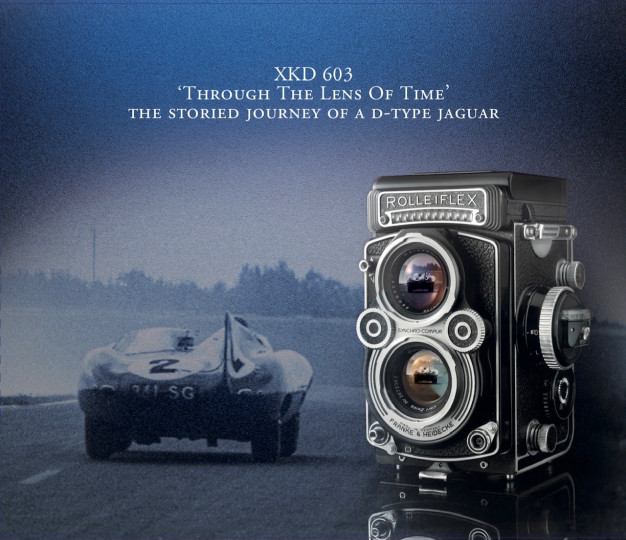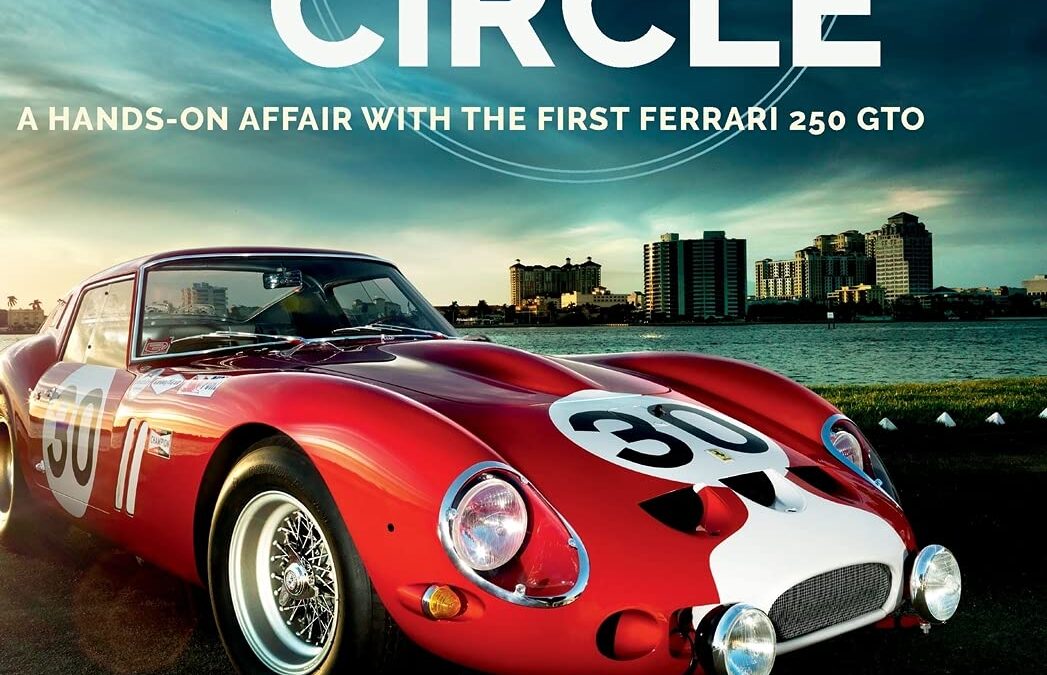
FULL CIRCLE: A Hands-on Affair with the First Ferrari 250 GTO may be the first car memoir – a car revered for its international racing performance and artistic mystique – the first Ferrari 250 GTO, born in Italy in 1962.
It is also the memoir of a man, himself unique – Larry Perkins, a rocket scientist /car racer /artist. His stories chronicle how The Car (a.k.a. “Sophia” named for the elegant Italian bombshell Sophia Loren) pops in and out of his life. These events, and the people associated with them, create a series of full circles in their shared journey.
Full Circle: the past becomes future becomes past, illuminating words to the famous song… “When Everything Old is New Again”.
While Larry was working on the Apollo program to land a man on the moon, and later the Viking Mars Lander program and other space missions, Sophia and Larry had an on-again off-again relationship – an “affair” so to speak – for over 50 years. They found each other in 1963 and formed a surprising dynamic of man-machine synergy. Life was fast and furious, fun and full of trophies. When it seemed destined to be over, Larry sold the Ferrari in 1966 for a mere $3600. The racing duo lost track but were re-united and then parted again. Finally … unbelievably … Sophia found Larry when they were both a little older. With the spark alive, their racing history was re-born in a most spectacular way. Each was transformed by the other.
The memoir starts with a man searching for the perfect race car and develops into a previously unrecorded history of s/n #3223 GT with racing tales. Larry and his wife, Petra, tell of an irresistible GTO attraction and adventures during the exciting era of ’60s sports car racing. (Petra first saw the Ferrari at a memorable race with a fiery crash at Sebring, Florida, when she was 15, but did not meet its driver for 15 more years.)
The authors show the exhilaration of key races and an anecdotal chronology of #3223 with photos, some never seen. They examine what a race driver is really like, the attributes of a highly competitive personality, and the unrelenting dedication to Winning. After all, it was not easy for a small privateer – someone who had started racing relatively late in life (with a consuming day job) – to compete with the likes of racing champions Phil Hill, Pedro Rodriquez, Mario Andretti, and Dan Gurney.
The book emphasizes the value of teamwork. “Doing the impossible” – in racing or rocketry – demands the best of humans working together to render perfect machines. This is an intimate account about the people who made The Car what it ultimately became.
How did this car acquire its timeless aura of mystique?
How cool is it to drive such a powerful and exquisite piece of machinery?
To what degree can a car be considered fine art?
What happened to Larry and why did it turn out to be so spectacular, almost eclipsing his early successes in racing the GTO? When and Where did all this happen?
And best of all, Who are the passionate people that made it happen?
Full Circle: A Hands-On Affair with the First Ferrari 250 GTO answers these questions and provides readers with a thrilling personal play-by-play of racing the very first Ferrari GTO for the very first time.
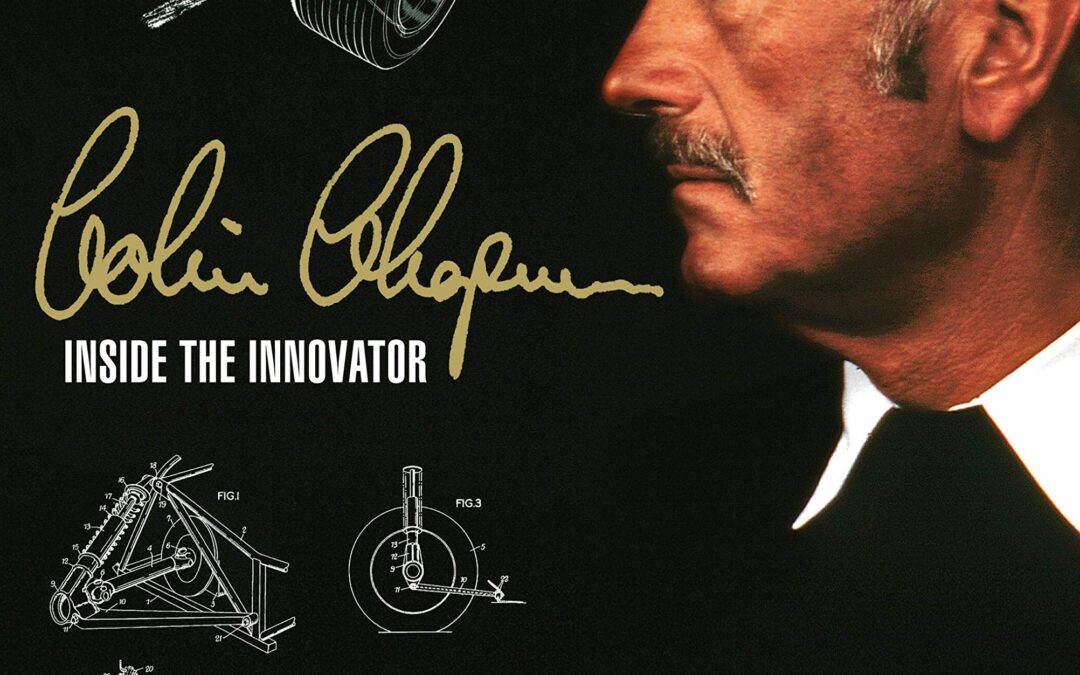
Renowned as one of the greatest creative forces in the world of the automobile, Lotus’s Colin Chapman (1928–82) left a mixed legacy. Was he an unparalleled innovator or an uninhibited exploiter of the uncredited ideas of others? In this landmark book, celebrated author Karl Ludvigsen gets to grips with the legend, digging deep beneath the skin of Chapman and his cars to explore and expose the motivations that drove this mercurial and controversial genius. Interviews with key figures in the Chapman story mesh with information from the author’s extensive archives to make this book a unique and compelling encounter between the engineer-innovator and the historian-investigator.
- Conceiving concepts: assessment of the man whom Keith Duckworth described as ‘the most brilliant conceptual engineer I’ve known’.
- Engine enterprise: recognising that he was, in his words, ‘not an engine man’, Chapman made the best of engines available to him, whether Ford 1172 side-valve, BRM H-16, Cosworth DFV V8 or Pratt & Whitney gas turbine.
- Transmission topics: this chapter moves through Lotus-designed ‘Queerbox’ transaxles, four-wheel drive, automatic clutch actuation and much more.
- Suspension sagas: from makeshift suspension ingenuity on his first Austin-based special to espousal of active suspension just before his death, Chapman gained and exploited an advanced understanding of a car’s underpinnings.
- Structure stories: Chapman’s accomplishments in this field are numerous. Best-known among them are his monocoque innovations, in glass-fibre for the Elite road car and aluminium for the F1 Type 25.
- Whittling weight: obsession with lightness was a Chapman mantra throughout his life. It contributed hugely to the success of his cars, occasionally at an expense of strength and safety that scared off some drivers.
- Aerodynamic adventures: Chapman enjoyed aerodynamics — ‘a very absorbing subject’ — and was at the forefront of major F1 developments in this area.
- Discovering downforce: early insights with wings and wedge-shaped bodies, exemplified by his Types 56 (Indycar) and 72 (F1), led ultimately to the pioneering breakthrough of traction-enhancing ground effect, which reached full flowering with the F1 Lotus 79.
- Ludvigsen gives special attention to Chapman’s exploits at Indianapolis, where he and his cars transformed the nature of America’s premier race with stunning innovations far from the safety of home.
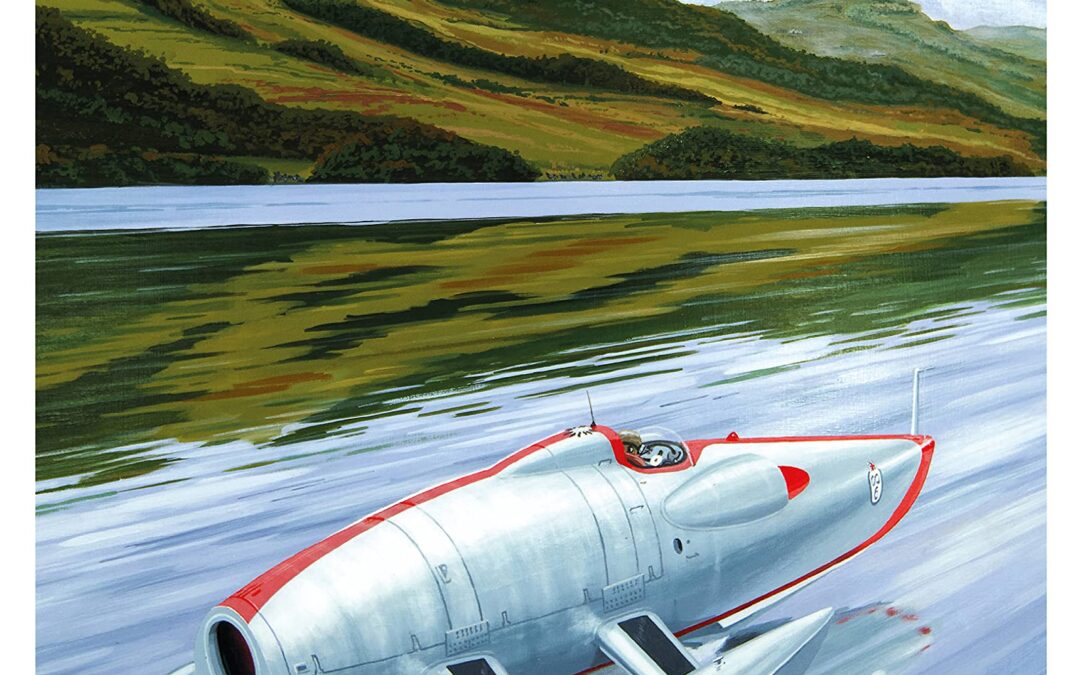
he tale of Crusader, the jet-powered boat of 1952, appears to be a simple one about the ambition of John Cobb and Reid Railton, two unassuming but deeply gifted men, to break the water speed record on Loch Ness only for their efforts to end in tragedy. In fact the story behind that fateful outcome — Cobb’s death on his first high-speed run — is a complex web of clever design and inspirational endeavour mixed with personality clashes and errors of judgment. After many years of research, including access to a wealth of original documentation, Steve Holter unravels the entire saga of the ill-fated Crusader and presents a compelling detective story.
- John Cobb: the modest businessman with such a thirst for speed that he wanted to become the fastest man on water as well as on wheels after setting his land speed record of 396.196mph in 1947.
- Reid Railton: inspired designer and long-time friend behind Cobb’s greatest speed accomplishments, notably with the Napier-Railton (holder of the lap record at Brooklands) and the Railton Mobil Special (land speed record car).
- In-depth study of Railton’s innovative ‘three-point’ hull design for Crusader, with two rear sponsons and a single ‘planing shoe’ at the front — plus a De Havilland Ghost jet engine delivering 5,000lb of thrust.
- Evolution of the design in parallel with testing of scale models, including a miniature jet-powered version evaluated near Portsmouth Harbour.
- Assessment and description of boat-builder Vosper’s wooden construction, under Peter Du Cane’s direction.
- An exhaustive account of proceedings at Loch Ness, where Cobb finally attempted a high-speed run on 29 September 1952 and achieved 206.89mph, faster than anyone had previously gone on water.
- Analysis of the structural failure that destroyed Crusader and killed Cobb.
Much of the story is told in the words of the key protagonists, drawing in particular on correspondence and written accounts from the key people involved, most notably John Cobb, Reid Railton and Peter Du Cane.

Lights Out, Full Throttle is the hilarious account of life in the F1 pit lane from two legends of the sport, Damon Hill and Johnny Herbert. Damon and Johnny here. Motorsport’s answer to Ant and Dec, just a lot more comprehensible and, all in all, a wee bit taller. Between us we have about 100 years’ experience of driving cars quickly and have competed in 261 Grand Prix spawning 25 wins, 49 podiums, one World Championship and 458 championship points. We even have a win at Le Mans to our names, as well as two smashed ankles, a broken arm, a broken wrist, a broken leg, about sixty broken ribs, a pierced upper thigh that missed Johnny’s twig and berries by millimetres, and a bruised ego or three.Basically, we’re two middle-aged men who are both what you might call physically compromised. That said, contrary to popular belief, we still have a modicum of bladder control and can talk Formula 1 with the best of them. Which brings us to our book. Despite its immense popularity, when it comes to things like humour and absurdity, Formula 1 is not exactly a ride on the big dipper and in that respect it hasn’t buttered our parsnips for decades. Well, nil desperandum boys and girls because we, Damon Graham Devereux Hill, OBE, and John Paul Herbert, No BE, are here to put the F back into Formula 1 by ditching aerodynamics, clean air and tyre degradation in favour of honest, forthright opinions and apocryphal stories involving automotive derring-do. And, derring-don’t!

• The ultimate insider’s guide to Porsche – the stories behind the legend
• Following on from the incredible success of Volume 1
• 111 more insider stories from the dream factory
• From the Coffee Tractor to the first epic turbo victory and the e-revolution
• Fully illustrated with 111 full-page color photographs
Here are 111 more gripping Porsche Stories that afficionados of the Stuttgart brand and sports car enthusiasts should know. Wilfried Müller tells the stories of very individual characters – no matter if in the race car cockpit or on the executive floors of the Stuttgart factory, the New York showroom or the Santa Ana racing headquarters in California. Meet Mark Donohue, Dan Gurney, Alwin Springer, Max Hoffman, Jackie Oliver, Brian Redman, Stefan Bellof, Björn Waldegård, Valentin Schäffer and many more. Enjoy the anecdotes of race cars dubbed Mickey Mouse or Kangaroo, Earl Rossi’s 917 on the French Autoroute, tales from 10,000 mile rallies, Porsches that handled best when going 1.5 mph, and Porsches that were never built. Learn about the background to America’s very own version of the legendary 962 racer, the story of the 356C SC Cabriolet, and the elusive America Roadster. Not to forget the chapter about magic Porsche words, which tell the stories of Porsche Design, “RS” or the “Schüttgut”, the Porsche family’s home base and retreat in the Austrian mountains.
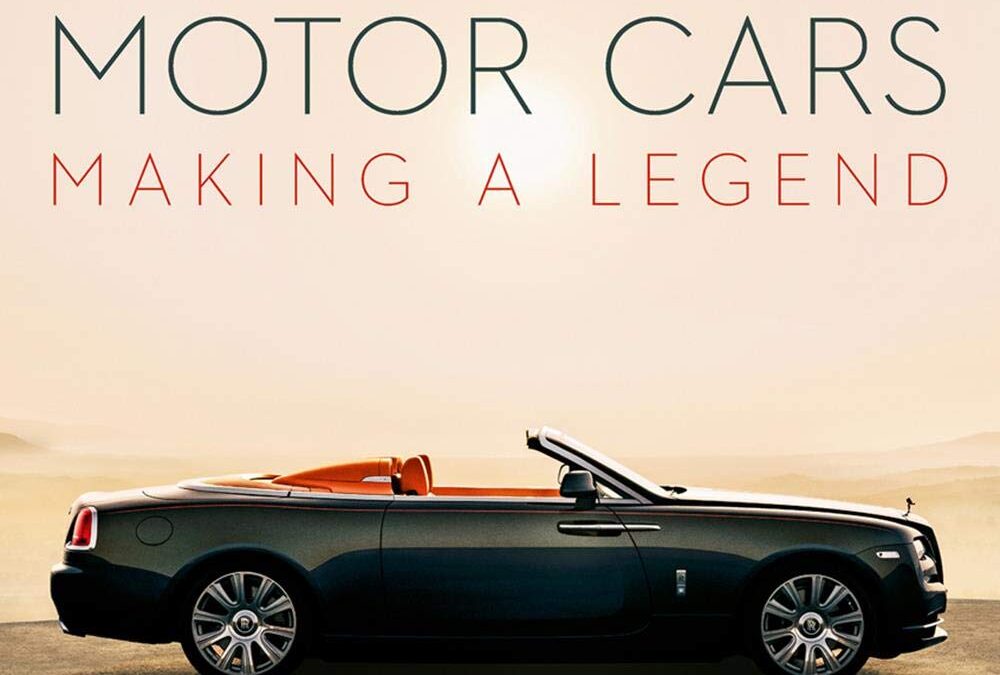
- The most prestigious motor car in the world. The true definition of luxury
- A tour of the Rolls-Royce facility and a unique insight into the manufacturing process
- A stunning collection of cars from the earliest models to those of the modern day
- A compendium of historical Rolls-Royce pictures, many unseen
- A luxurious book, beautifully designed and impeccably produced to the highest standards
- The ultimate Rolls Royce volume
Step inside a world of engineering excellence with this collection, dedicated to Rolls-Royce Motor Cars. The authors were granted unique access by the Rolls-Royce company. Detailed descriptions of the manufacturing process are set against a backdrop of heritage and prestige, including an exclusive showcase of the company’s manufacturing facility and a splendid gallery of Rolls-Royce cars dating back to sketches of work from the 1930s. This collection includes numerous unseen photos of Sir Henry Royce driving early versions of his iconic cars.
A true behind-the-scenes experience, this book introduces the reader to the Rolls-Royce master craftsmen at work. High-quality images and detailed insights reveal the process by which each car is constructed, from the 2019 Ghost Zenith back in time to the 1904 Original. Rolls-Royce opens their archive to reveal a spectacular timeline of design, providing readers with an insight into the world of those who still uphold the words of Sir Henry Royce: “Strive for perfection in everything you do”.
The contents list guides the reader through the complete construction of a car: Design and Customization, Paint and Finish, Chassis Assembly, Woodwork, Leather, Testing, The Spirit of Ecstasy Hood Ornament, and more. With a glimpse at the Rolls- Royce Training Academy and a plethora of featured cars from last year to the start of the last century, this is the ultimate Rolls-Royce collectors’ volume. Featured cars include the new Ghost (2020), the Phantom Tranquility (2019), Phantom Aviator Coupe (2012), the Phantom II Continental (1934) the AX201 Silver Ghost (1907), and many more.
Simon Van Booy is a celebrated Anglo-American author, who has won the Frank O’Connor International Short Story Award. His essays have been published in The New York Times, The Daily Telegraph, The Guardian and more.
Harvey Briggs is the Editor/Publisher of Rides & Drives, a website dedicated to motoring journeys across the world.
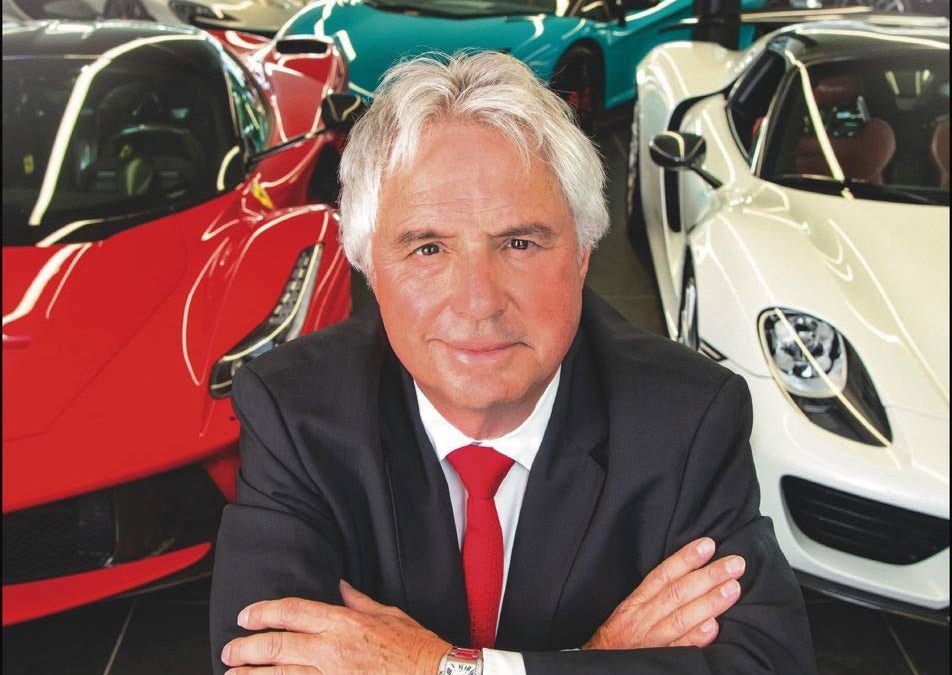
The car world is full of fascinating characters, but few have a story to tell quite as remarkable and inspirational as Tom Hartley.
Walking out of school at the age of 11, unable to read or write, Hartley set up his own business buying and selling cars. From that moment, he defied logic and ripped up the rule book on his way to the top. Today he runs one of the most successful independent family run performance and luxury car businesses in the world. He has built up an unrivaled reputation as “The Dealmaker.”
Tom has been at the top for over 40 years, survived and thrived through four recessions, and overcome three life threatening illnesses. In his own brutally honest words, Hartley tells his gripping story of a boy from a traditional Romany family who swapped the classroom for the cut-throat world of Glasgow’s car auctions, buying and selling his first car at the age of 12. Having decided to drive himself around illegally, he was only 15 when he had his first car crash, and they don’t come more spectacular than writing off a Ferrari Dino – nothing has ever been normal in the world of Tom Hartley!
Hartley had made his first million by the age of 17, but soon suffered major setbacks as his business went bust, and he found himself at risk of losing his sight without major surgery. Hartley started all over again, living in a mobile home with his wife and working from the back of a car. He had gone from hero to zero, but his burning desire to be the best saw him climb his way back to the top. His ability to clinch deals in some of the most bizarre places has become legendary, like buying a car in a sauna, while stuck in a traffic jam on a motorway, and even in a swimming pool!
Family has played a key part in the Tom Hartley story, his wife has been at his side all the way, and his two sons have followed closely in their father’s footsteps. Indeed Tom’s belief in family is one of the inspiring messages that comes through.
Hartley’s inspirational story is about the unshakeable belief in his own abilities, from a precocious schoolboy who had a dream, and then through sheer hard work and a burning desire to make the dream come true. This is not just a book for car enthusiasts but for anyone who has dared to dream. It’s a story that will inspire and motivate, and proves you can make the wildest dream come true if you want it badly enough.
Tom’s remarkable story is written with the collaboration of journalist Ken Gibson, for 24 years, award-winning Motoring Editor of The Sun newspaper.
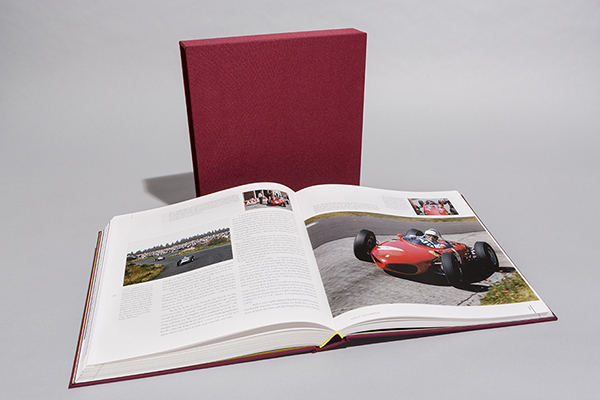
Based upon many hours of conversations taped exclusively for ‘Inside Track’, together with other material accumulated over many years of friendship with John Lamm, Doug Nye and others, The Racing Autobiography tells the story of Phil Hill’s life in his own words, from his childhood in 1930s California through his later years as co-owner of the highly successful Hill & Vaughn car restoration business, a respected motor sport writer and TV commentator, and much loved elder statesman of the American vintage and classic car movement with an unrivaled knowledge, in particular, of the Packard marque and its cars.
Illustrated by numerous photographs, letters, race posters and programmes, and other automobilia from the Hill Family archive, plus many other photographs of Phil’s racing career and beyond – including his last great victory in the charismatic Chaparral 2F at Brands Hatch in 1967 – the book offers an unrivaled view of this remarkable man.
The Racing Autobiography is hardbound with a cloth-covered case and inset photographs to match the two volumes of the Collector’s Edition, with the same page size and 428 pages, and is presented in its own cloth-covered slipcase.
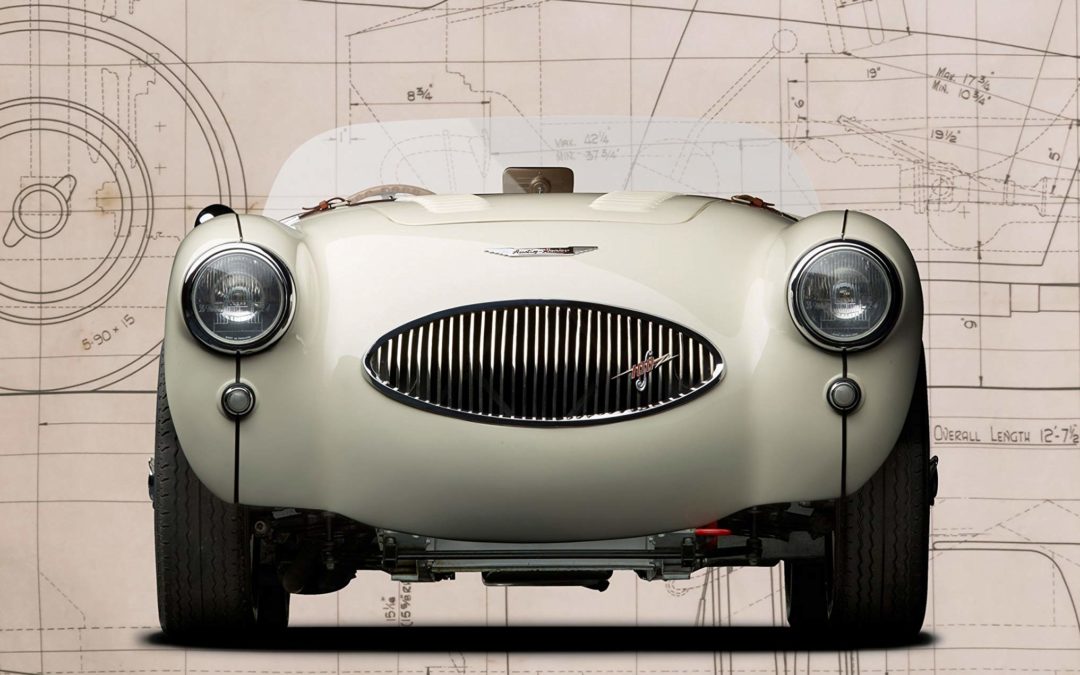
Written in collaboration with Gerry Coker, the designer responsible for the iconic Austin-Healey 100 and Sprite, this extraordinary volume represents the most accurate and complete account of the sports cars built at Warwick, Longbridge, Abingdon and West Bromwich. The author had unprecedented access to Donald and Geoffrey Healey’s private papers, diaries, scrapbooks and photo albums, corporate and financial records from BMC, Donald Healey Motor Company and Healey Automobile Consultants, the files of Jensen Motors and Nash-Kelvinator, dozens of personal interviews and exhaustive research into previously unavailable primary source material. As a result, Healey: The Men and the Machines offers a compelling examination of the true story behind these incredible automobiles and the individuals who created them.
From his early childhood and heroic service as an aviator in the Royal Flying Corps during the First World War, this book provides a comprehensive account of Donald Healey’s motoring career, including competition outings and his involvement with Invicta, Riley and Triumph. The story of the Healey marque’s birth during the darkest days of the Second World War is told through the words of the men involved, revealing the myriad obstacles that faced the small team during a period of strict rationing, limited resources and government meddling.
Fast, elegant and endowed with excellent handling, the early Healey sports cars were among the fastest in the world, acquitting themselves admirably at events such as the Alpine Rally, Mille Miglia and the 24 Hours of Le Mans, but Warwick’s survival was constantly in doubt until the landmark agreement that resulted in the Nash-Healey erased many of small firm’s financial struggles. With access to Nash-Kelvinator’s internal correspondence for the first time, the authors are able to set the record straight about this crucial period in the marque’s history, including the controversial machinations behind the development of the Healey Hundred that made a smash debut at the 1952 London Motor Show.
Lavishly illustrated with previously unpublished photographs, Austin-Healey competition and record-breaking efforts are covered in exquisite fashion, seen through the eyes of legendary names like Rauno Aaltonen, Clive Baker, Paddy Hopkirk, Count Johnny Lurani, Lance Macklin, Timo Mäkinen, Roger Menadue, Don and Erle Morley, Pat and Stirling Moss, Carroll Shelby, John Sprinzel, and Ann and Tommy Wisdom. Equally fascinating are the stories behind the troubled Jensen-Healey and Donald Healey’s attempts to continue building sports cars well into the 1980s, refusing to enter a sedate retirement that would have been so richly deserved.
Destined to become the definitive reference on the subject, Healey: The Men and the Machines includes over 200,000 words, more than 700 detailed footnotes, and eight appendices that cover the competition and record breaking activities of the various models, specifications for every model produced, including the limited production variants, and Donald Healey’s personal musings on racing and sports car design. An instant classic, this is a work certain to inform and entertain enthusiasts of the men and machines that brought the world to its feet at a time when Britain was down on its knees.

The sequel to the graphic novel Steve McQueen in Le Mans
The new opus called « AND STEVE MCQUEEN CREATED LE MANS » is much better than a simple part 2, this is the end of the legend of the movie explained by Steve McQueen himself. 64 pages, same format, same style, same quality,
One night in 2013, I had a dream…
Sandro, if you don’t create a graphic novel about the movie “Le Mans”, no one will ever do it.
Now let me tell you about my own “Le Mans”. A story of cars going 220 mph, of bust-ups in the stands, ego competitions, unbelievable duels, guys who’ve got balls, in other words, real racing. Real life!
This is what Steve McQueen told me… “ You must never give up your dreams ”
Sandro Garbo
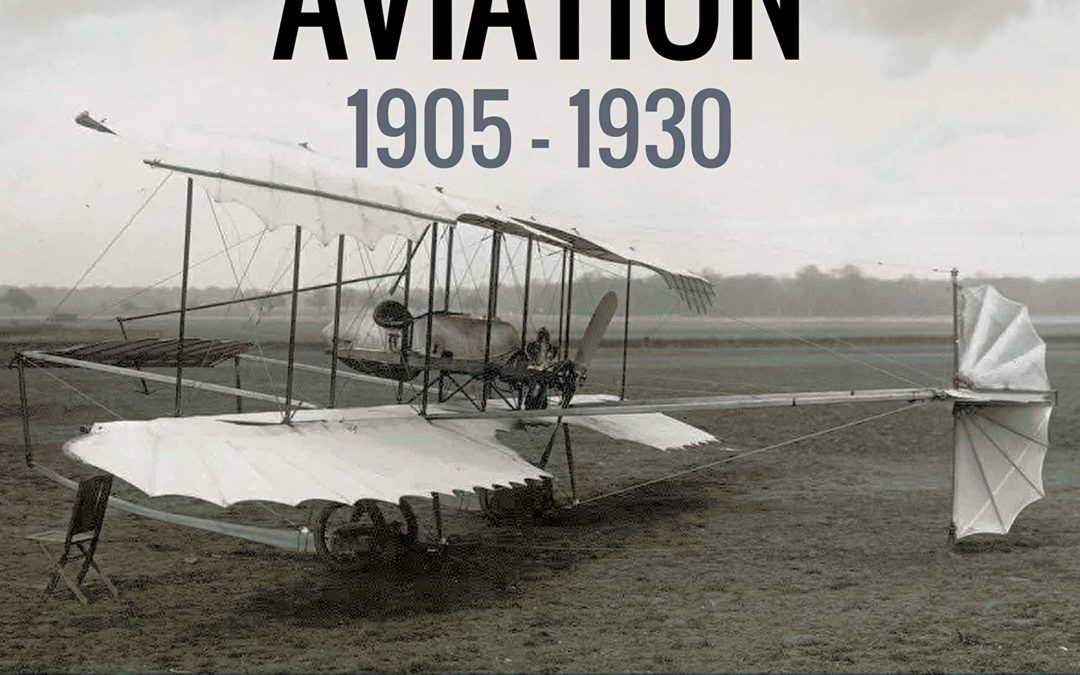
France has been called the cradle of aviation by many – a fact that cannot be disputed, although some have tried. By the end of the 19th century, she led the world in lighter-than-air flight. Any concern about heavier-than-air flight was dismissed as inevitable, and France would achieve it in due course. By the time Blériot bravely enquired ‘Which way is England?’ the country was ready to redress any perceived shortfall. Besides leading European aviation, France was the nation that named all the parts of an aeroplane with words many of which we still use everywhere today.
France was also the first nation to stage air exhibitions. Unlike their counterparts in Britain, Germany and America, French designers were thoroughly entrepreneurial and tried a wide variety of adventurous styles from pusher to canard and monoplane to multiplane. In 1909 the first Air Show was held at the Grand Palais. The ‘Exposition Internationale de locomotion aérienne’ ushered in what was to become an enduring tradition. Every year, the aircraft exhibitions were a massive success. The interior design by André Granet, who since his youth had been fascinated by flying, was such a success that the Automobile-Club subsequently commissioned Granet to do the same for the car shows.
It is not surprising that all this derring-do, all these technological achievements and all this innovation drew reporters and photographers like moths to a flame. The men, the machines, the places and the events all were recorded, reported, reproduced and then were filed away. Hundreds of images appeared in print, but thousands were printed up only as contact prints from large-format glass negatives and then disappeared into albums to be forgotten about. In the mid-1990s the author came across one such treasure-trove; a number of dust-covered albums containing around five hundred images of aircraft, airships and expositions – it is doubtful if most have appeared in print before, so this will probably be the first time the events of these French pioneers have ever been showcased.
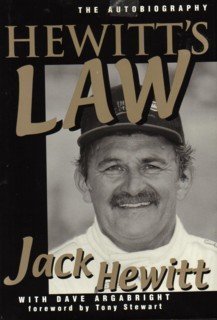
UPDATED AND EXPANDED! After a long hiatus, Hewitt’s Law is back. The new edition contains two new chapters and an additional 32 pages of photographs.
There are many words to describe Jack Hewitt: candid, funny, outgoing, demanding, intense, honest, rigid, friendly, passionate, hot-tempered. This is the autobiography people have been talking about since it was originally published in 2003.
You’ll find over 300 pages of honest, outrageous memories and stories from a spectacular career that led Jack from the dirt bullrings of America to the Indianapolis 500. From humble Ohio beginnings to being named one of the top 25 sprint car drivers of the 20th century.
Sprint cars, late models, Australia, fights, friends, highs, lows, laughter, tears, you’ll find it all in Hewitt’s Law.

Spectacular Illumination: Neon Los Angeles, 1925-1965 is a spectacular collection of vintage photography that showcases the glowing neon heritage of the City of Angels. More than 200 images fill its pages. L.A. has long been recognized as the most vibrant city in America, and part of its radiance comes from streets lined with neon signs during the Golden Age of neon from 1925 to 1965. Photographer and historian Tom Zimmerman shows images that depict, in both color and in black-and-white, what Raymond Chandler, F. Scott Fitzgerald, and countless other writers have tried to put into words. Spectacular Illumination tells a story of a city that has glowed, now glows, and, thanks to institutions such as the Museum of Neon Art, will glow forever.

Flying the “open cockpit convertible” Ercoupe
Fly-About Adventures and the Ercoupe offers real flying adventures in a wonderful classic convertible type Ercoupe airplane. Come fly with me to OshKosh, Sun-N-Fun, the Arkansas Picnic, and other cross country trips. Experience unique discovery and the unbelievable. Many events are supported with neat color photo’s. Words are good but nothing says so much as pictures. The book also provides insight to what it’s like to own such a fun filled open cockpit convertible aircraft. There are also photo’s of modifications by owners such as paint schemes, instrument panels, etc. Over 5,500 of these aircraft and 11 models were built by several companies between 1940 and 1970. 70 years after the first Ercoupe was built, there are thousands still airworthy, affordable, and being flown by pilots seeking their remembrance. With a bit of imagination, you have the opportunity to fulfill your dream of flying adventures too.

Betty Pettit’s family lived in the East Mojave for about ten years in the period 1925-1934. They owned and operated the 7IL Ranch, near the Bonanza King Mine, Providence, and Mitchells Caverns. This book contains Betty’s reminiscences.
The author retells stories of the colorful miners, prospectors, cowboys, ranchers and railroad men. Heartfelt and humorous, the recollections tell of the family’s challenges and triumphs. So much of Western literature is by and about men. “Flat Tires & Coffee Fires” is significant in that it is by a woman and the emphasis is family life. The author has a remarkable ability to return to her childhood and express the experience through words.



